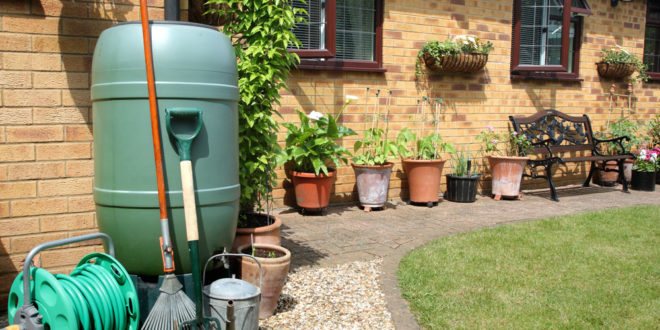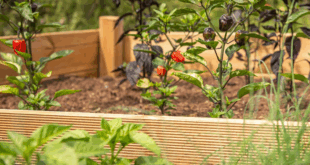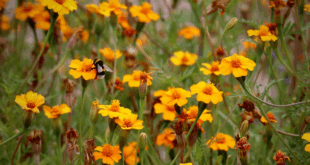Whether you have a small outdoor space, a modest-sized garden, or vast expansive grounds, it can be a challenge to keep your garden organised throughout the year.
From weeds that just seem to keep popping up here, there, and everywhere to shrubs that threaten to take over the garden and even part of the house, there are many common problems that households struggle with when it comes to their outside space.
Fortunately, you don’t need to spend every spare moment of your free time carrying out maintenance to keep your garden looking neat and tidy.
Read on to discover seven common sense ideas that promise to transform your garden and keep it looking its best with minimal effort and maximum results.
- Label your plants
If you have an allotment, a greenhouse, or even just a few small planters where you grow herbs and vegetables, it can be hard to keep track of all the seeds that you’ve planted.
To avoid confusion and make sure you know what plants are where, all you need is an effective labelling solution. While there are lots of DIY labelling ideas online, all you really need to do is stick blank labels to pots, and use a Sharpie!
These are available in a wide range of different sizes, which means they can be used to label tiny pots that only contain seeds right up to huge pots that hold trees.
- Invest in storage
For households with young children, pets, or both, you need to make sure you have plenty of storage in your garden. Unless, of course, you don’t mind a lawn that’s littered with plastic toys!
When it comes to storage solutions for your garden, there are two important factors that you need to consider: firstly, what size do you need, and secondly, where are you going to put it?
If you have a large garden, you may want to consider investing in a garden shed where you can keep your garden tools, equipment, and anything else that you don’t want to be left outside. Alternatively, if you have a smaller space, then a storage unit tucked away in a vacant corner is a good choice.
- Create a maintenance schedule
If you’re the type of person who leaves your garden to its own devices all winter and then panics when spring approaches, then you’re far from alone. However, this isn’t the most practical way to keep on top of your outdoor space.
Instead, it’s a much better idea to create a maintenance schedule that includes tasks that need to be done each month, as this can prevent your garden from becoming overwhelming.
If you’re not sure where to start with creating a maintenance schedule for your garden, you may want to head to the RHS website where you’ll be able to find a list of gardening jobs that need to be carried out each month, which you can adapt to suit your garden.
You may also want to create a schedule for planting so you can make sure that the plants you want are planted at the right time of the year so that they have the specific conditions needed to thrive.
- Get rid of anything you don’t use
Take a look around your garden. Is it cluttered with things that you don’t want or need? If so, then now’s the time to have a clear-out.
Although you may have spent a lot of money on a certain piece of garden equipment or gardening tool, if you don’t use it, then it’s simply taking up space that could be used for something else.
Make sure you’re ruthless when it comes to getting rid of anything you don’t use and remember, you don’t have to throw everything away. You could choose to sell items on local social media selling sites or donate them to charity.
As well as making your garden look more organised, getting rid of clutter is also beneficial for local wildlife.
- Take care of your tools
If you want your garden to look good, then it goes without saying that you need to take care of your gardening tools and equipment.
Make sure that you store them in a safe place that’s protected from the elements, so they’re kept dry all year round. Also, take the time to clean your garden tools properly after each use rather than leave them all dirty.
For electrical items, you need to regularly check that they’re working as they should be and take them to be repaired if you find any faults.
- Look out for pests and diseases
There’s nothing worse than pouring your heart and soul into a new vegetable patch or flowerbed only to find that it has been taken over by pests or plagued by disease only a few weeks later.
Therefore, you must remain vigilant at all times and look out for any common garden pests and diseases that could be killing your plants.
Take note, even the smallest trace of a disease or pest can contaminate a plant and those near it, so make sure these are removed as soon as possible. It’s also a good idea to always make sure that you have pest sprays to hand, whether these are shop-bought or homemade.
- Don’t forget to prune
There aren’t many people who love to prune, but that doesn’t mean that it doesn’t need to be done. In fact, pruning is essential for your garden, especially if you want to keep it looking neat and tidy.
The process of pruning involves finding dead or overgrown sections that need to be cut away and then dealing with them quickly and effectively. A failure to prune can stifle the growth of your plants and even cause harm to them.
Pruning differs from plant to plant so, if you’re new to pruning, you may want to check out a book on pruning or look up the information online.
 Gardeners Club The Gardeners Club is a free to join online club for everyone with an interest in gardening and gardens.
Gardeners Club The Gardeners Club is a free to join online club for everyone with an interest in gardening and gardens.






